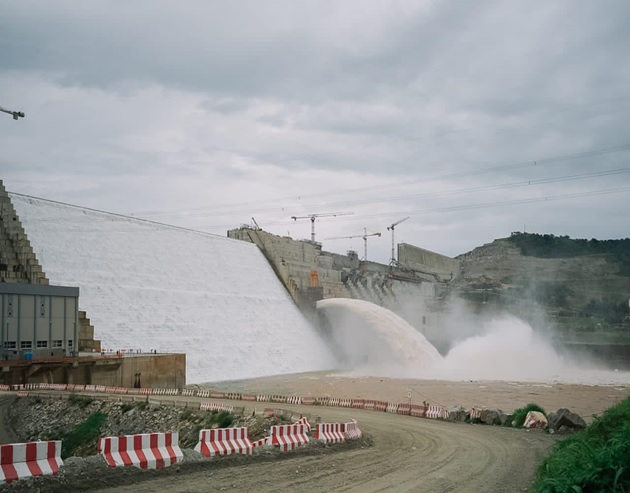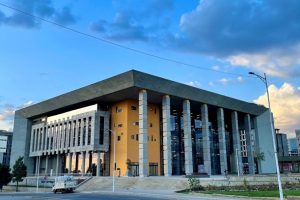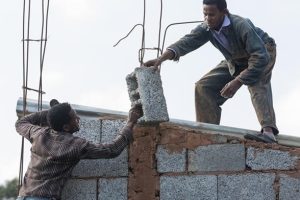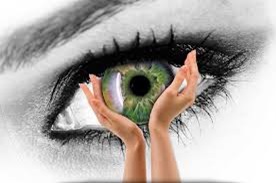
BY MENGISTEAB TESHOME
Currently, energy is becoming the turning point to catalyze development, attract Foreign Direct Investment (FDI) aside from improving the quality of life of citizens; mainly those who have no electric access and living with energy poverty even to carry out their day to day activities, including preparing food.
Evidently, power supply has direct household-level impacts. It brings equity among gender disparities, reduces pressure on natural resources, and enables access to a health facility. These fundamental human needs that are accorded in the UN universal declaration of human rights are now very luxurious to the majority of Ethiopians.
Undeniably, millions of Ethiopians still live without electricity which poses multifaceted challenges in their day to day activities. Especially women and girls, who are duty bound to travel long distances to fetch water on a daily basis, gather fire woods and cook food through burning wood and dung, encounter greater danger on their health; in addition to their economic deprivation.
To this end, Ethiopia has been working persistently to develop and utilize its water sources for energy production, improve the life style of its citizens, and make sure that they live a dignified life.
The construction of the Grand Ethiopian Renaissance Dam (GERD) in this regard beyond generating power and lighting has incalculable benefit. It relieves women and girls who are still suffering under the yoke of poverty and impacted hugely for the reason they are responsible for all household’s burdens.
True, energy for Ethiopians is not of a luxury commodity, preferably a hard fight choice to live a dignified life. GERD is a long-awaited dream for millions of youth for an employment opportunity, and bread for the impoverished drought-hit pastoral communities. It is also a long-awaited dream for the rural shepherd who used to chant slogans and sorrows against the bad deeds that the Blue Nile has caused over his ancestors’ land. Above all, it is a quest for equity and shares over one’s natural resources.
According to Ethiopia’s Ambassador to France Henok Tefera, the Grand Ethiopian Renaissance Dam (GERD) is a project of development, cooperation and clean energy.
In an exclusive virtual interview with local media, Ambassador Henok noted that the dam is a great source of energy which will contribute towards alleviating climate. It will generate electricity that is essential for the country’s development since energy is essential for all sectors of the economy.
The country could also generate hard currency by selling electricity to neighboring countries and thereby strengthening its cooperation with neighboring countries.
Above all, the project is vital to extricate people from poverty, provide electricity to millions of Ethiopians who do not have access to electricity.
The Ethiopian Diaspora has played a vital role in the growth and stability of the country through direct and indirect financial contribution to support mega-projects across the country, Ambassador Henok elaborated.
“The Diaspora in France as elsewhere is strongly mobilized more than ever for the support of this dam,” he pointed out.
The Abay water has now started to flow over the top of the Grand Ethiopian Renaissance Dam for the third time.
Accordingly, the height of the middle part of this mega-dam has reached 600 meters above sea level and the left and right sides were 611 meters. With its two turbines going operational, GERD generates 375 MW of electricity.
While speaking the socioeconomic benefits of the dam following the announcement of the accomplishment of the third phase of the dam filling,
Prime Minister Abiy Ahmed said that when the construction of the dam is fully completed, it would have substantial economic potential. Over seventy islands will be formed because of the dam; forty of them have over 10 hectares of land, some have from 800 to 2000 meters of hectares and the smallest ones will be 5 hectares of land. The dam also has the potential for fishing activities.
Documents confirm that the dam has enormous benefits as more than 60 % of Ethiopia’s population lives in areas without electricity. Due to this and other reasons, the GERD project is viewed as the best solution to alleviate the problem and extricate the people suffering from energy poverty.
GERD, for Ethiopians, is a symbol and a sign of self-reliance and a fight back against colonization. It is a sign of resilience and self-esteem, praising the power of unity. It is a dream come true, abolishing the walls of impossibility. It is a seal and a sign of every Ethiopian. Everyone has put his/her legacy on the tower and walls of the dam. Ethiopia, on the other hand, had repeatedly expressed its positions against a colonial water agreement signed and motivated only for colonial spirits. GERD, which is being built on the Blue Nile (Abay in Amharic), is serving as a patriotic aspiration and national pride, drawing all walks of life together for its completion. Many Ethiopians believe GERD as a second ADWA, where an African power had defeated the western colonial aggression. GERD is a symbol of overcoming abject poverty and decolonizing themselves from impossibility.
According to the document, Ethiopia, as a nation, has experienced a survival threat from frequent seasonal drought (every ten years) and weather fluctuations due to El Nino. El Nino is becoming a hard fact for nature dependent nomadic communities causing massive water and pasture scarcity. To reverse this natural order, the country needs to show resilience and invest in renewable energy.
GERD is part of the quest for survival as 23.5 % of the total population in Ethiopia is living below the poverty line, where the majority of them are living in rural villages. These populations are either dependent on traditional farming or following nomadic life. On the other hand, Ethiopia has only 40 % of electricity coverage, and power rationing is considered as normalcy. Power generating dams’ capacity was going down during dry seasons and failed to support the ever aspired rural transformations and an industry lead development plan. The Egyptians, and Sudan, who are dependent on the Blue Nile for their freshwater needs, have a 100 % electricity coverage and created commercial agriculture. The depth and extent of poverty in Ethiopia are not comparable to Egypt. Ethiopia needs a “sword” to beat poverty and inequality. Ethiopia has no alternative except using its water resources and generating the most awaited energy that is expected to lift its people from abject poverty.
The Ethiopian Herald 20 August 2022





